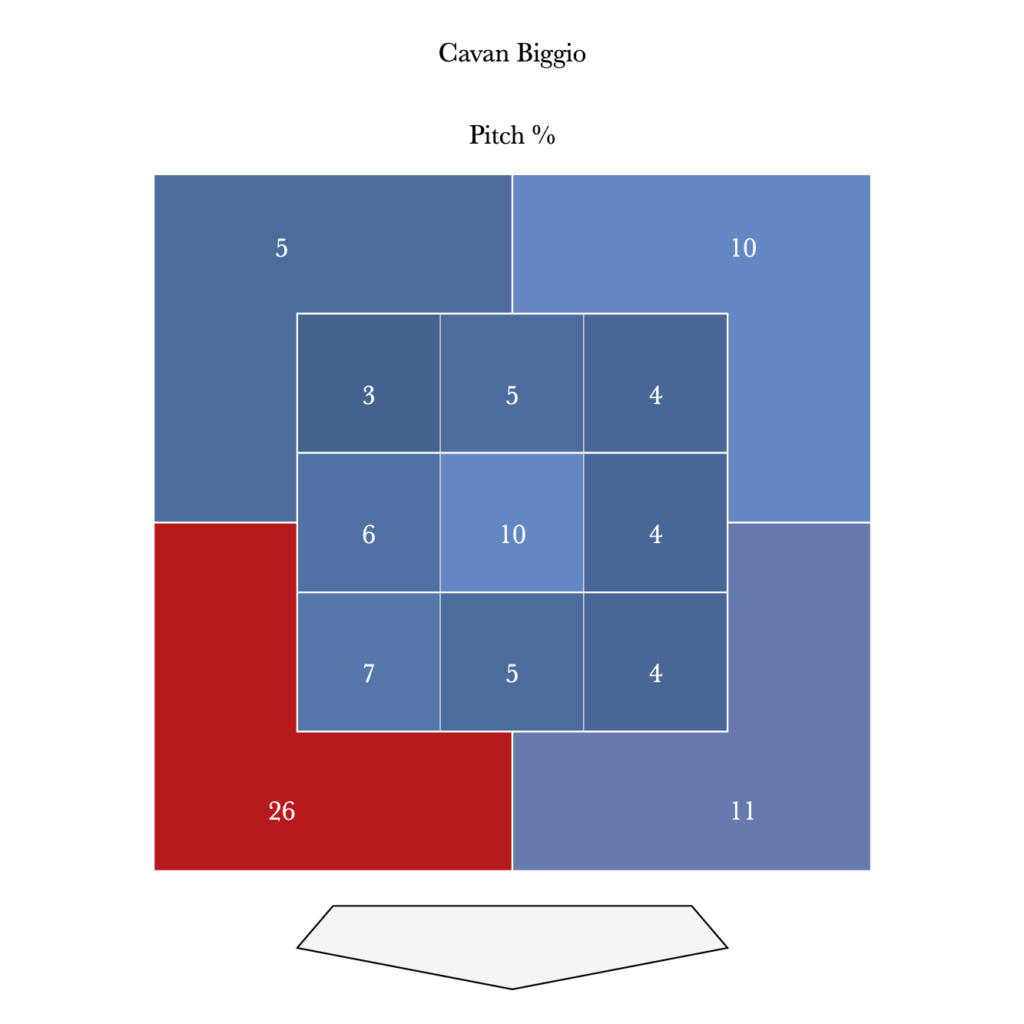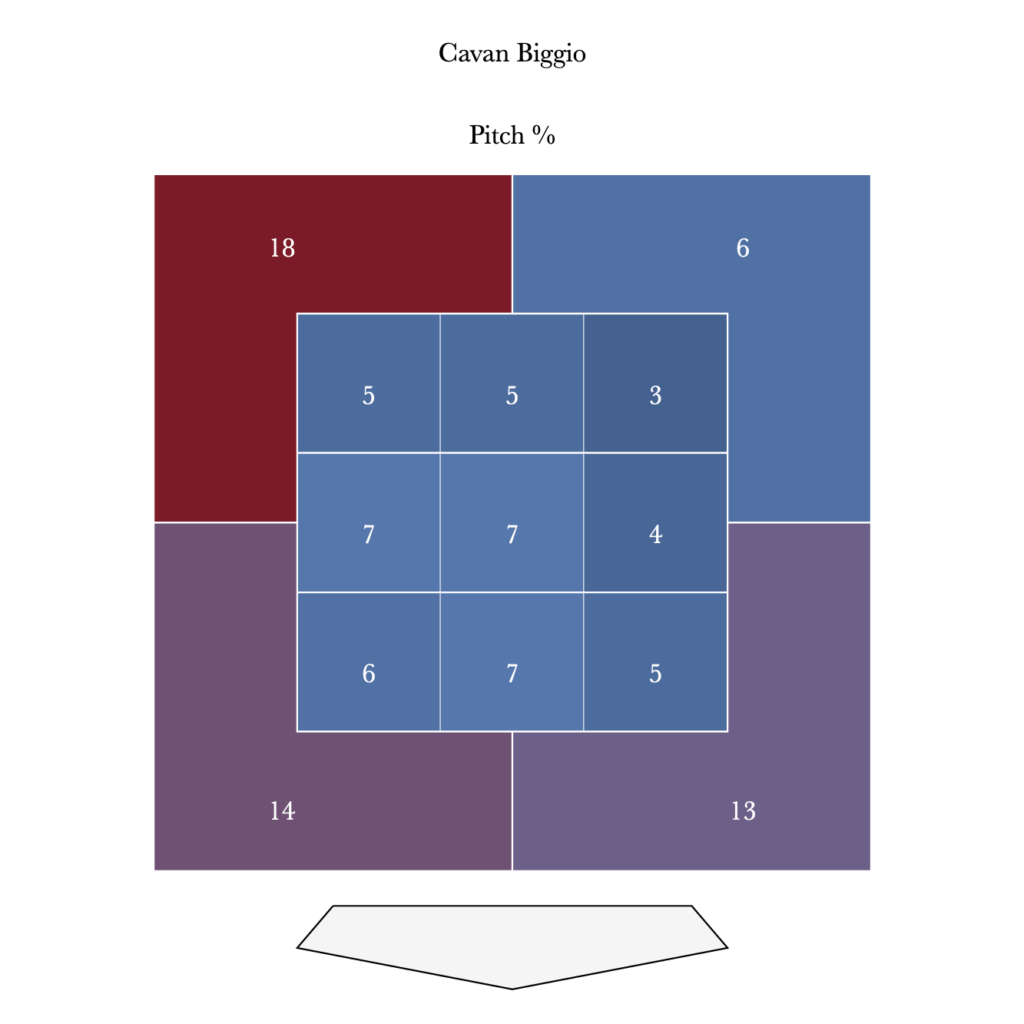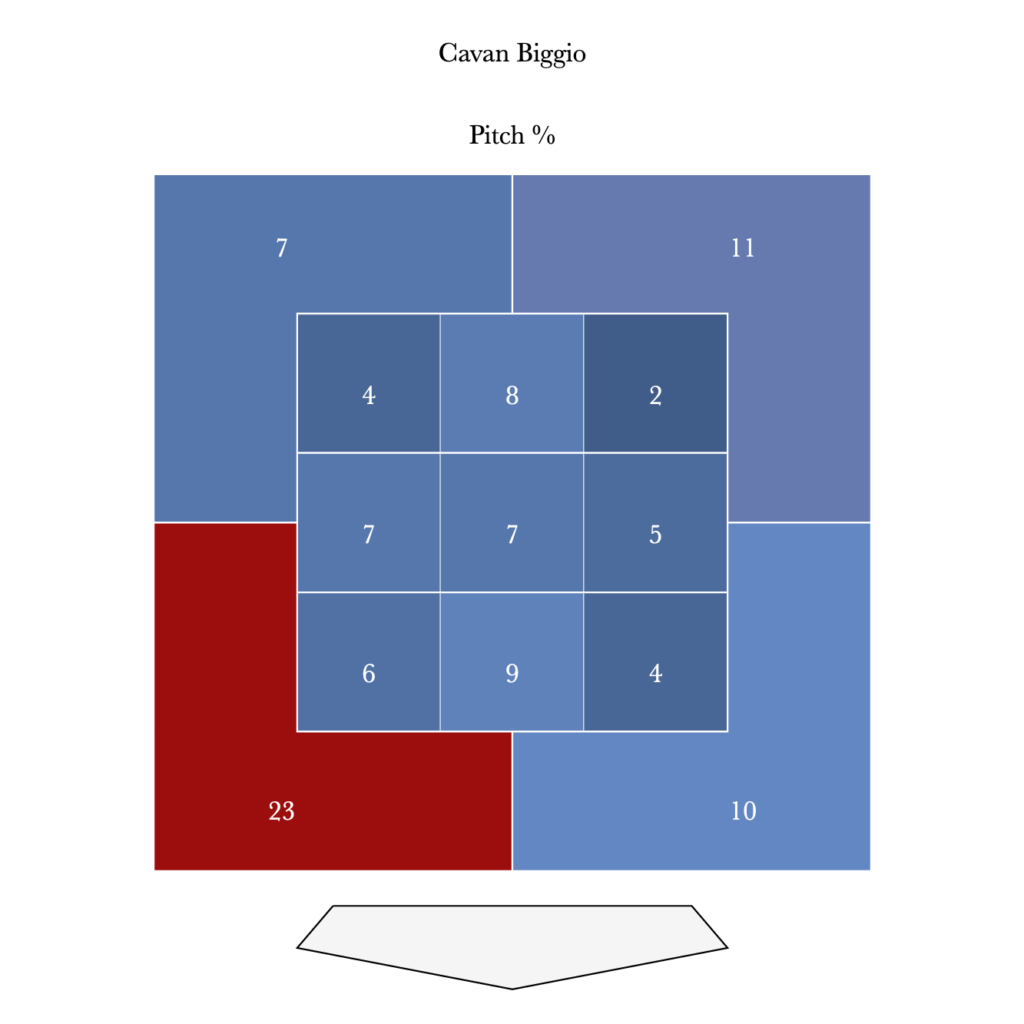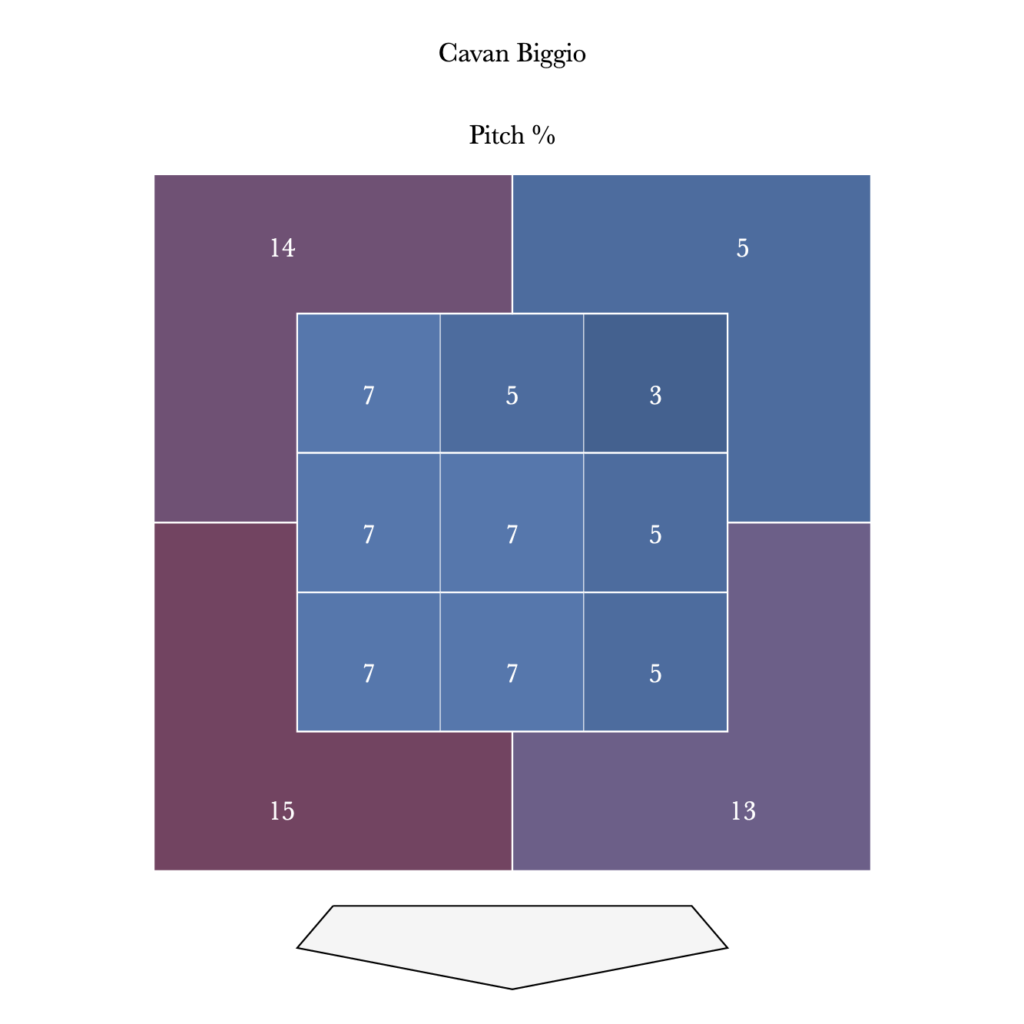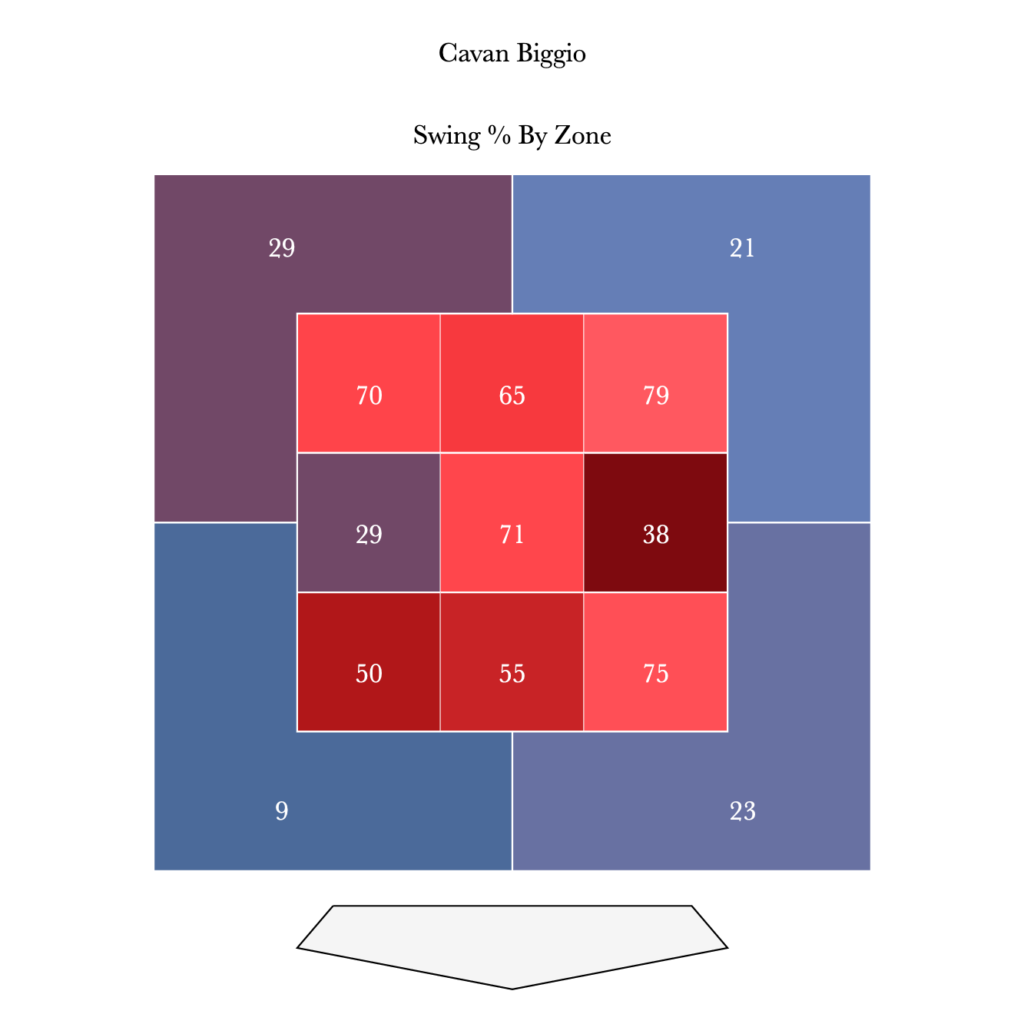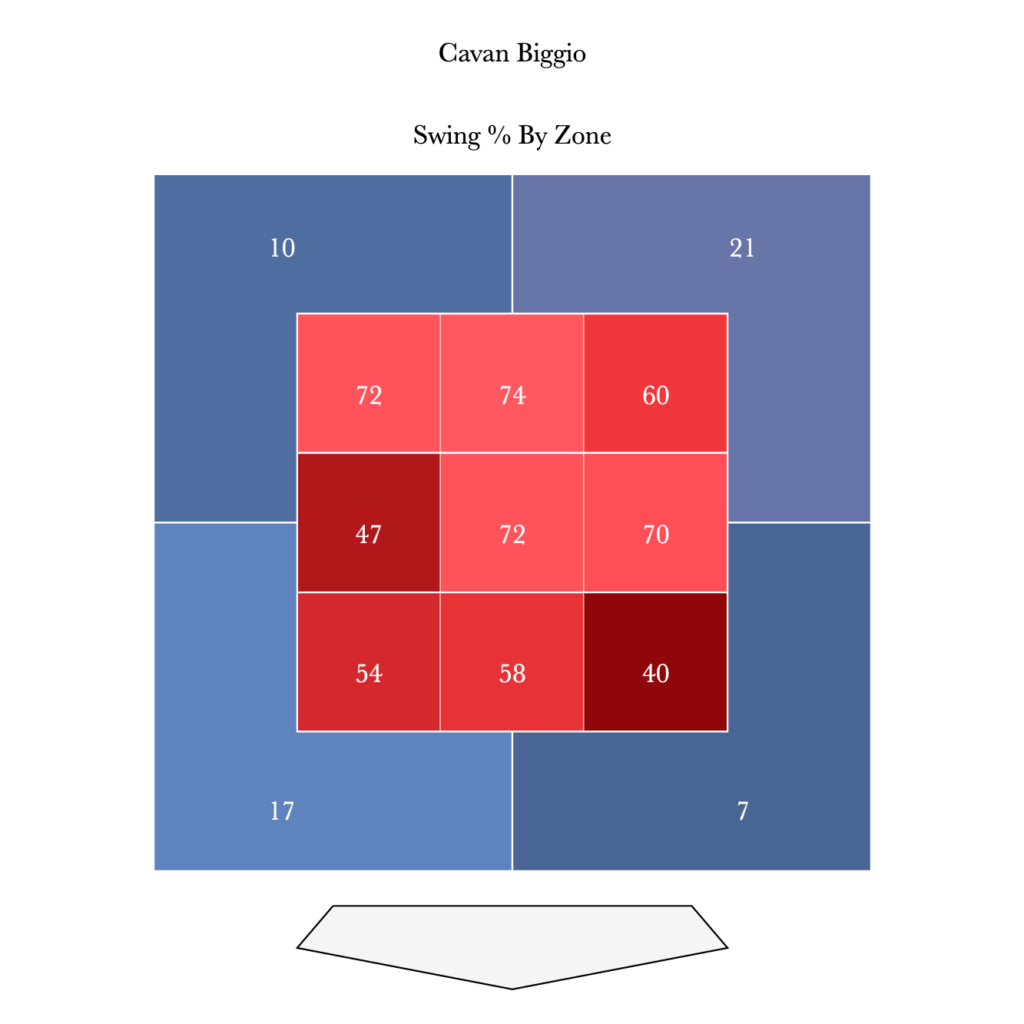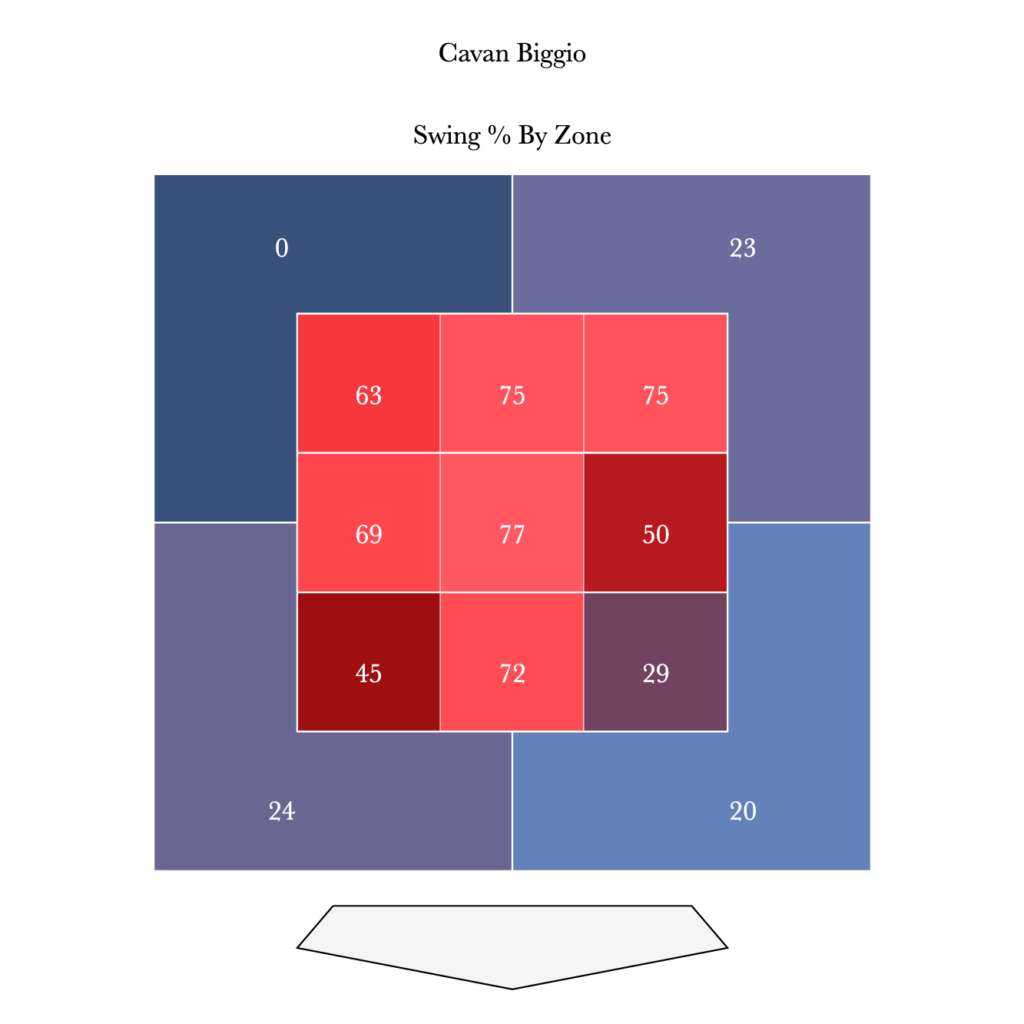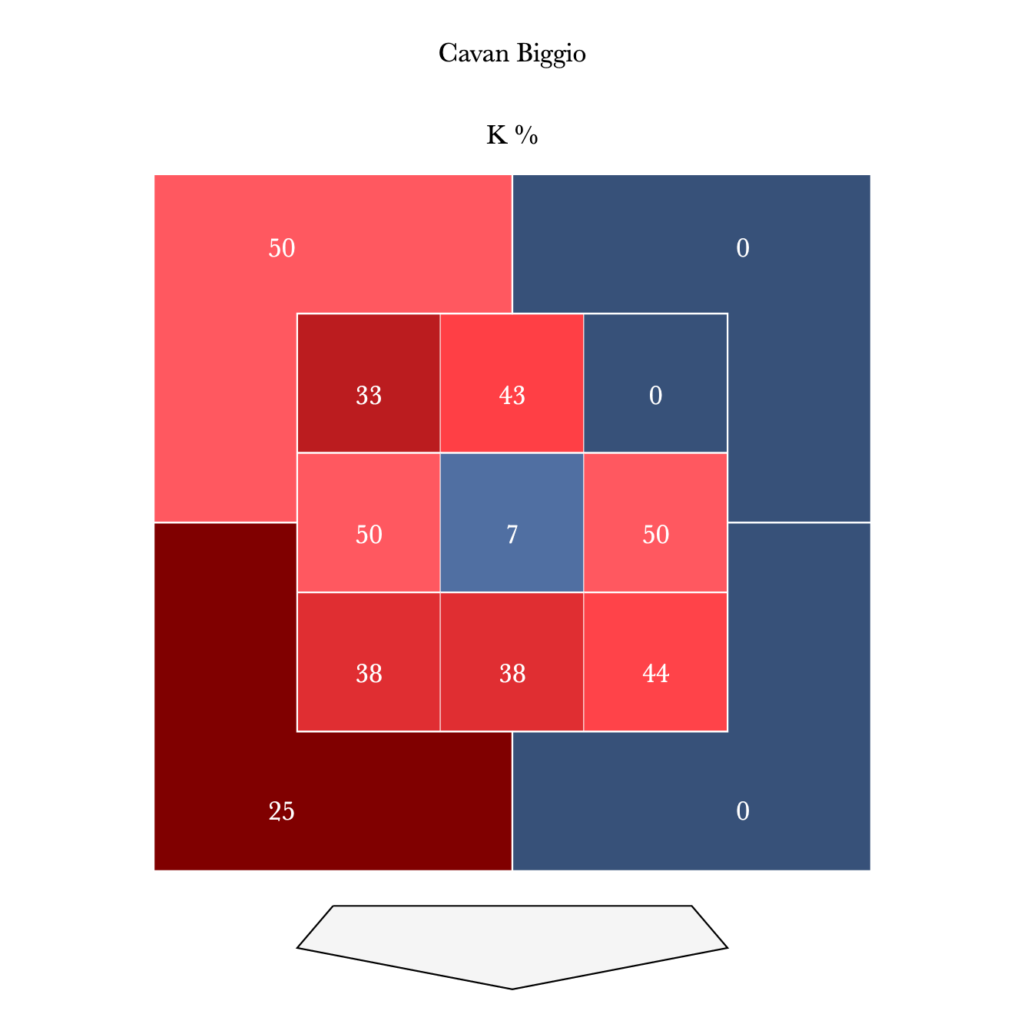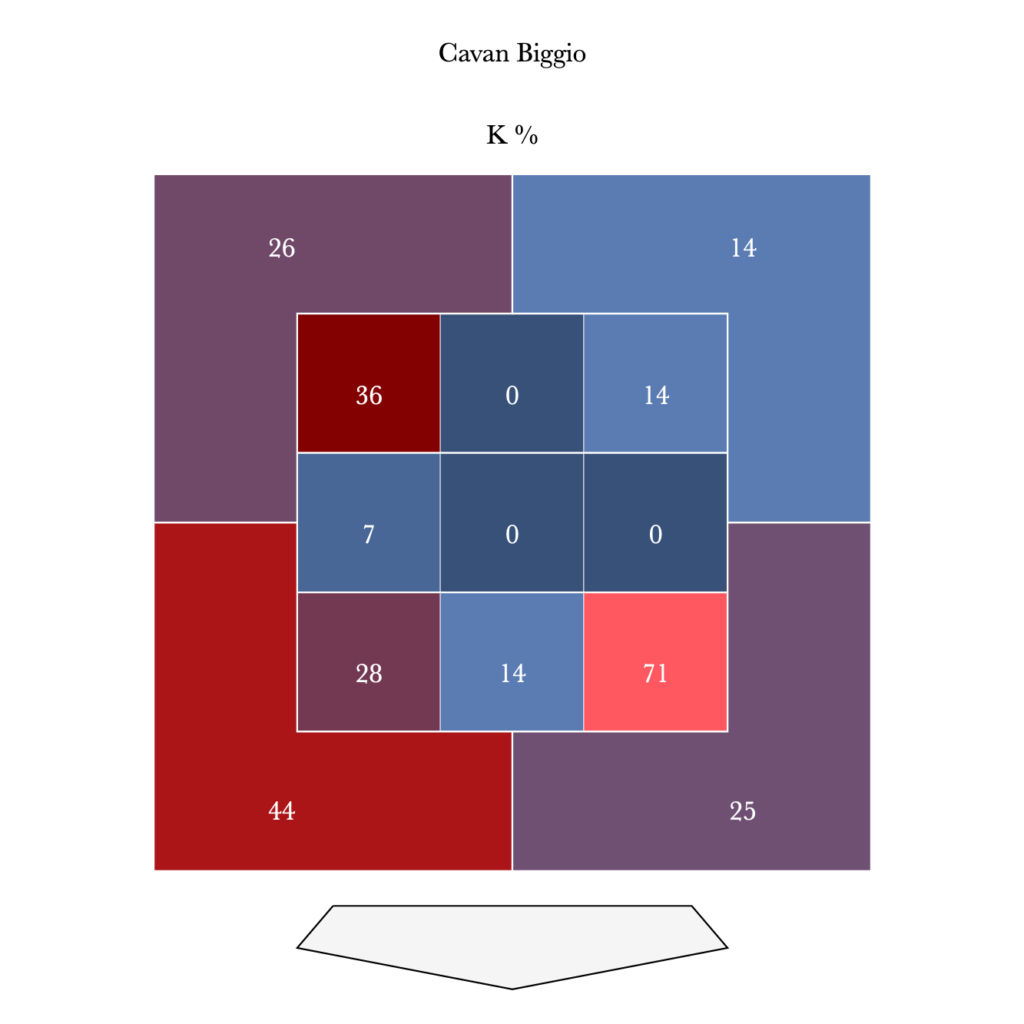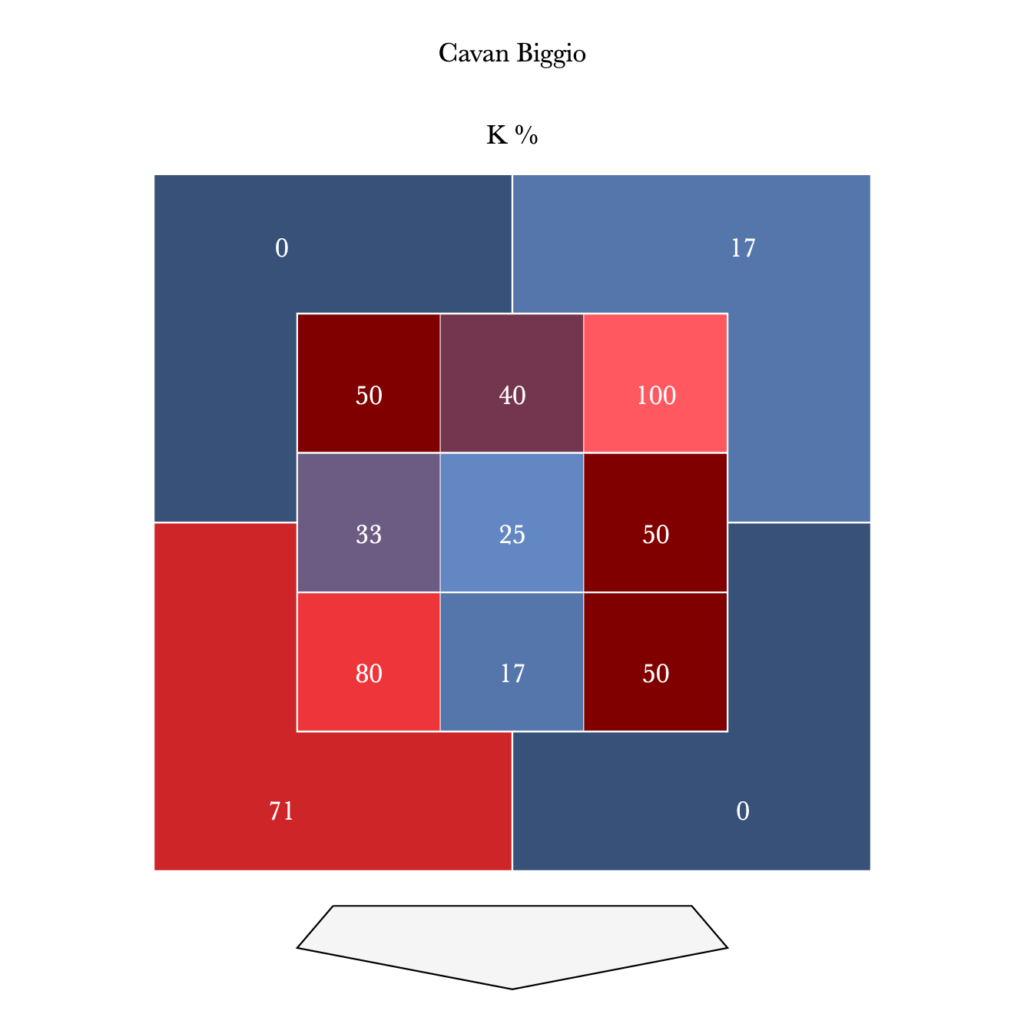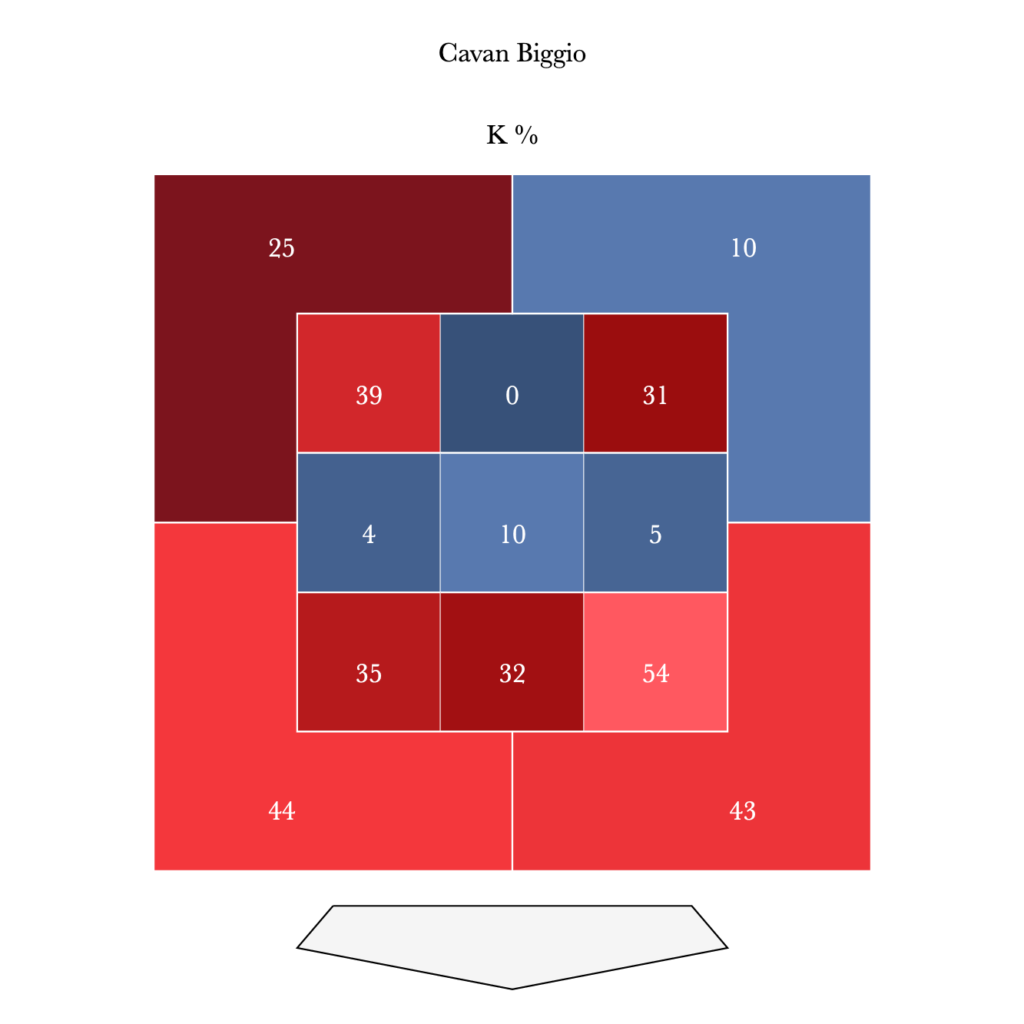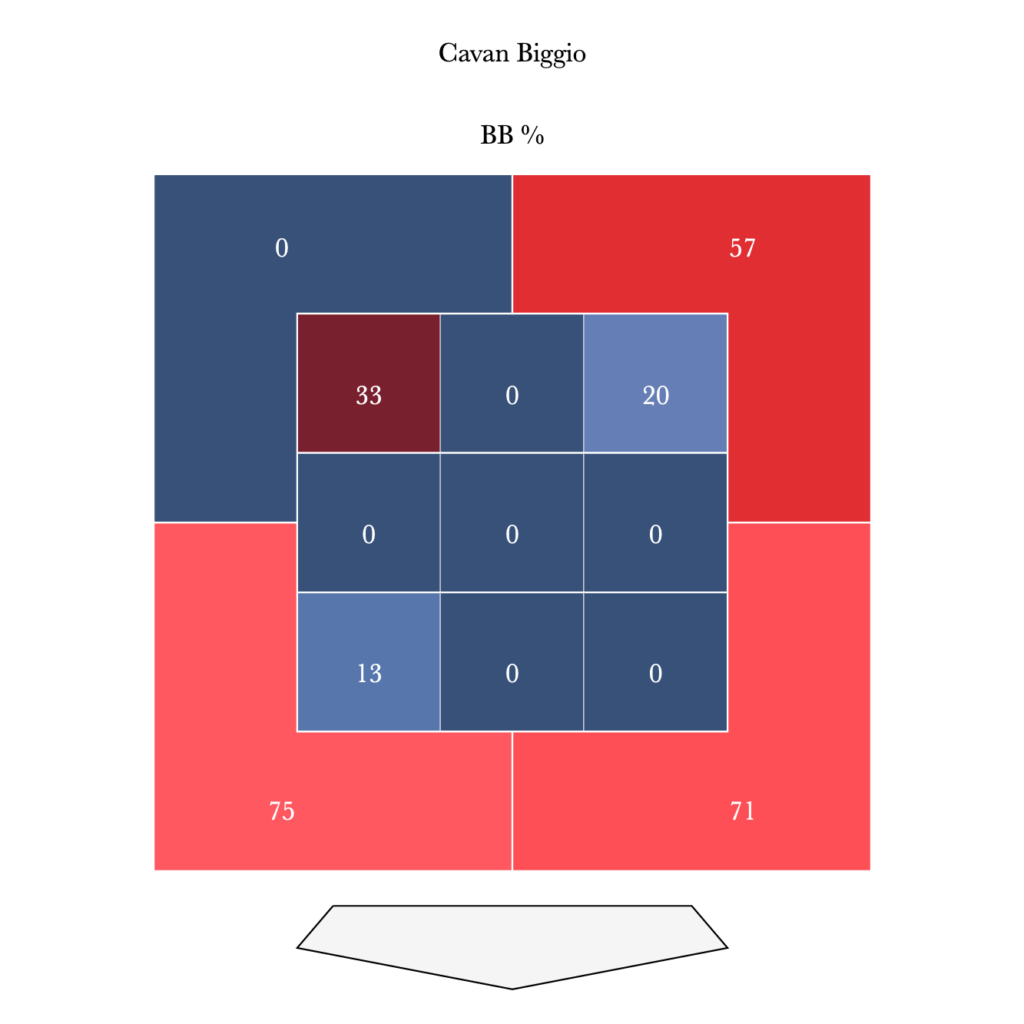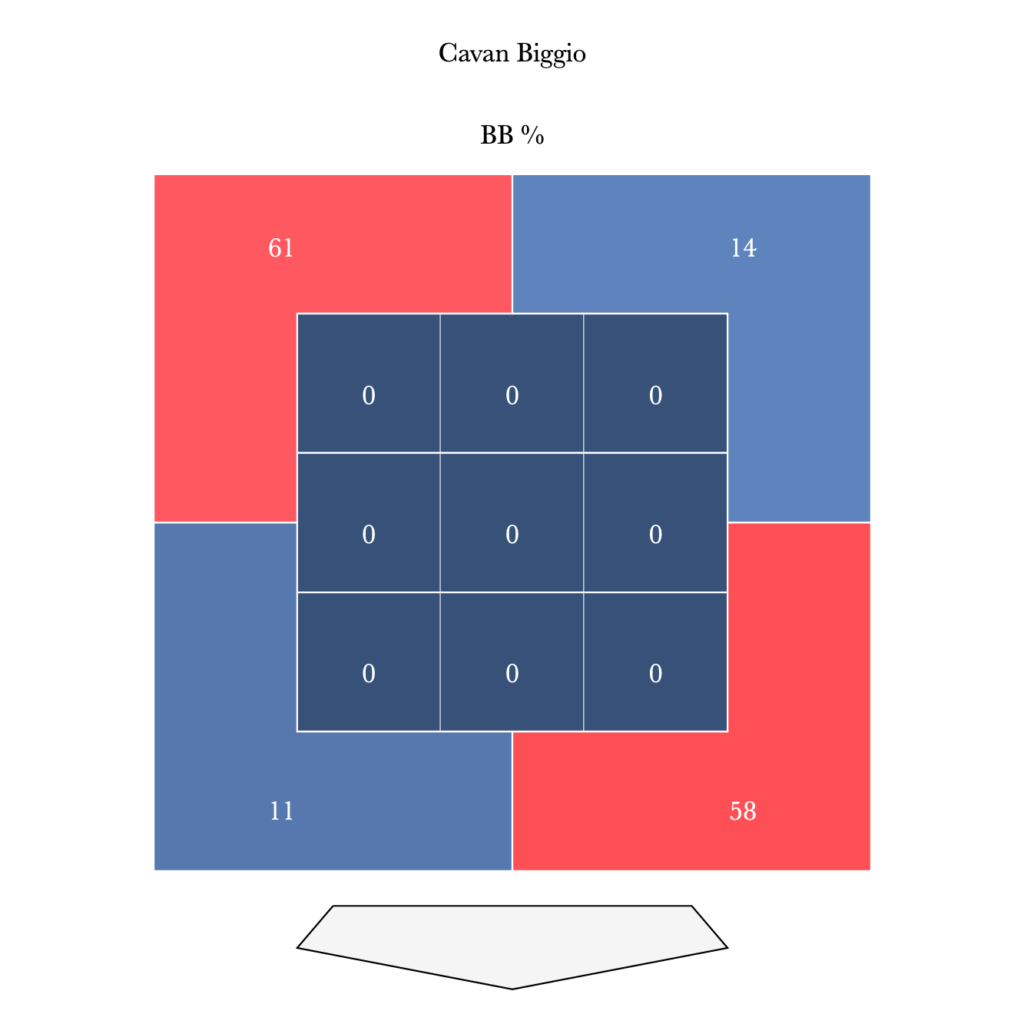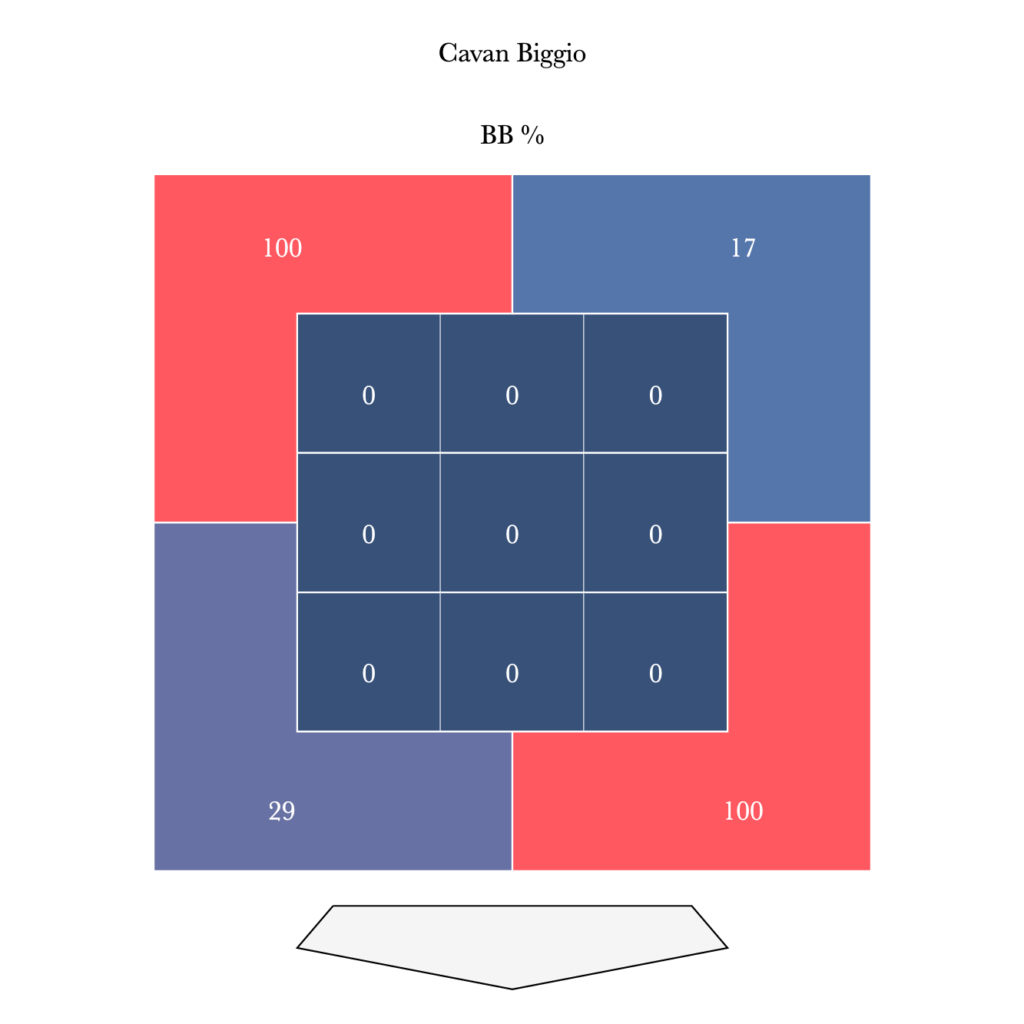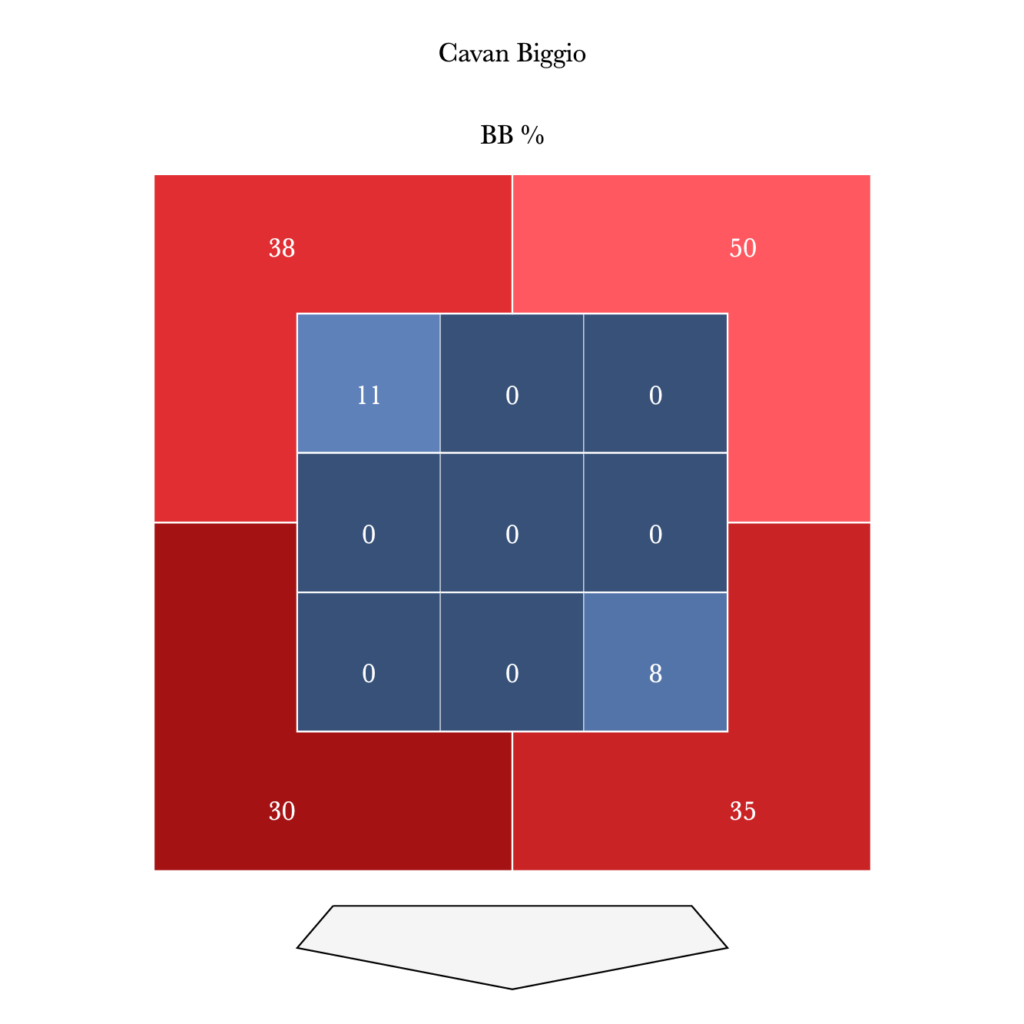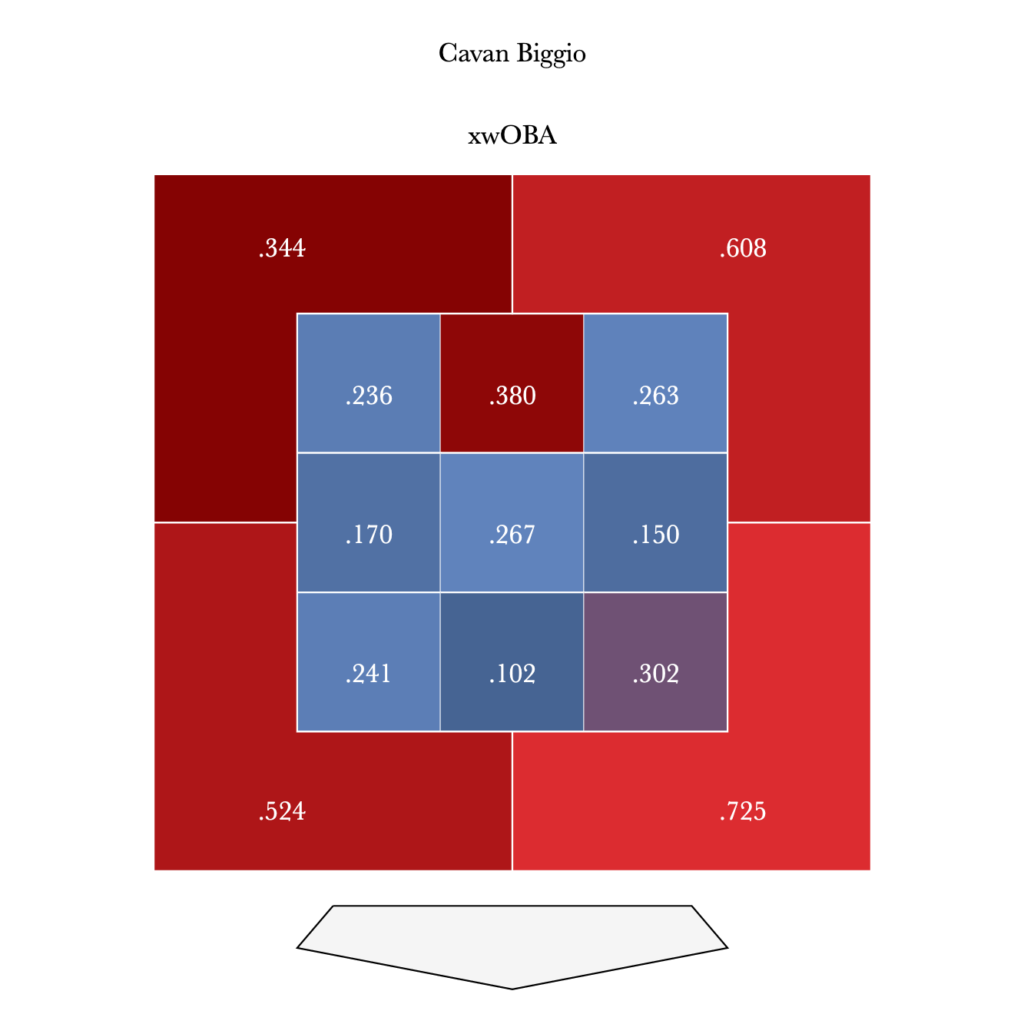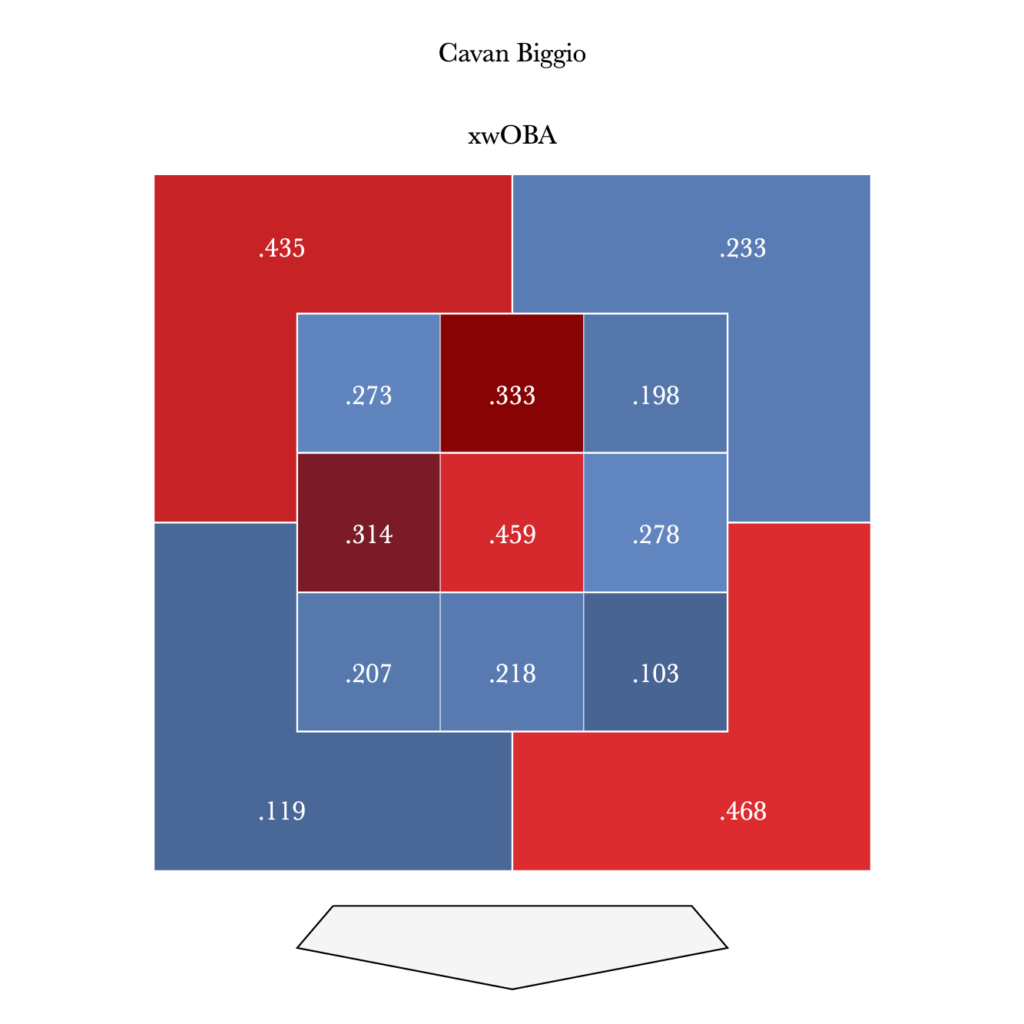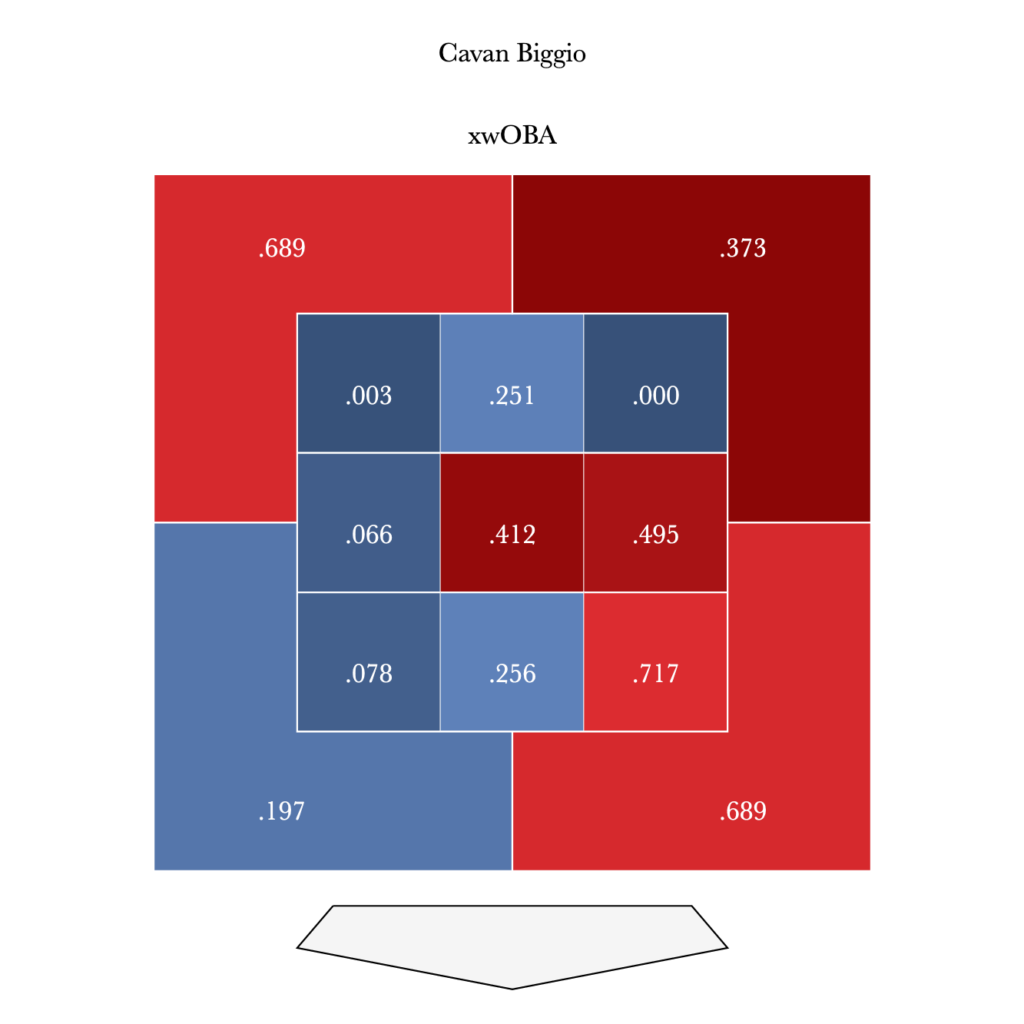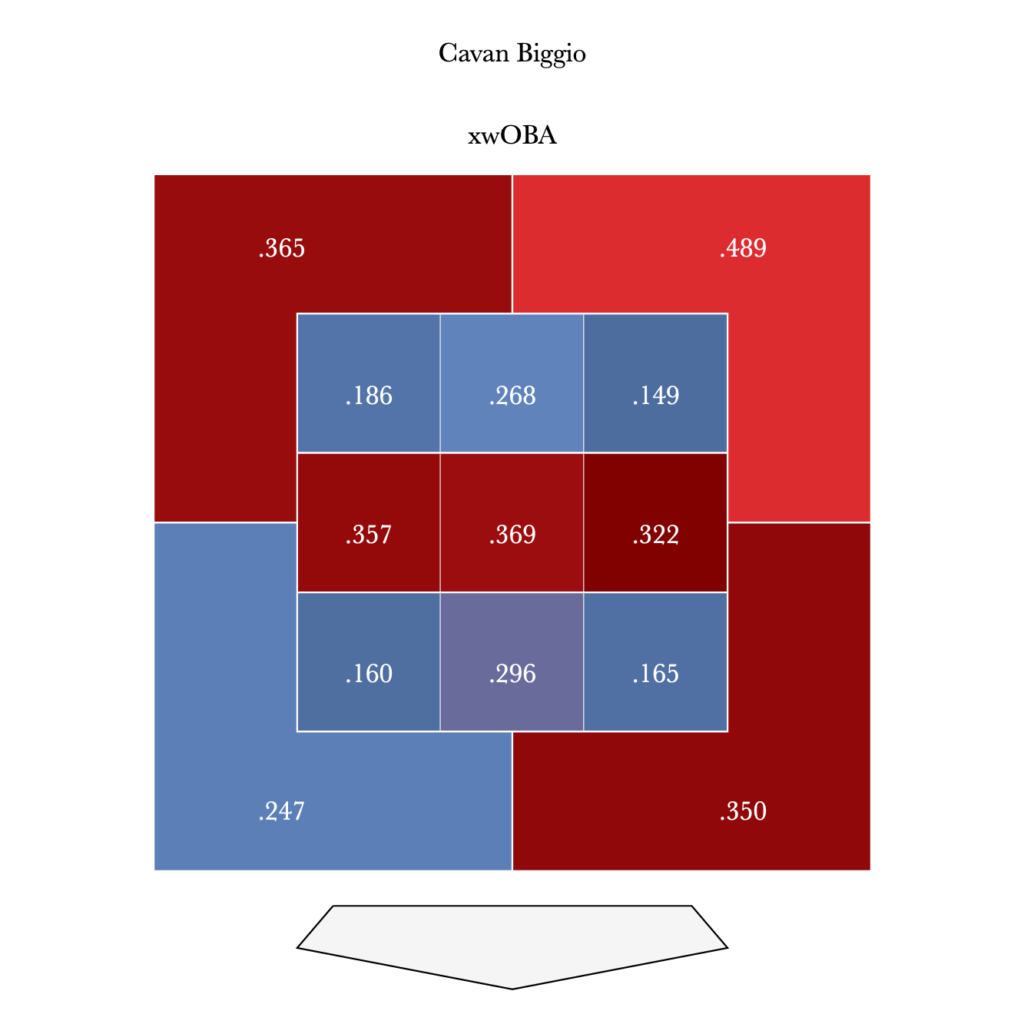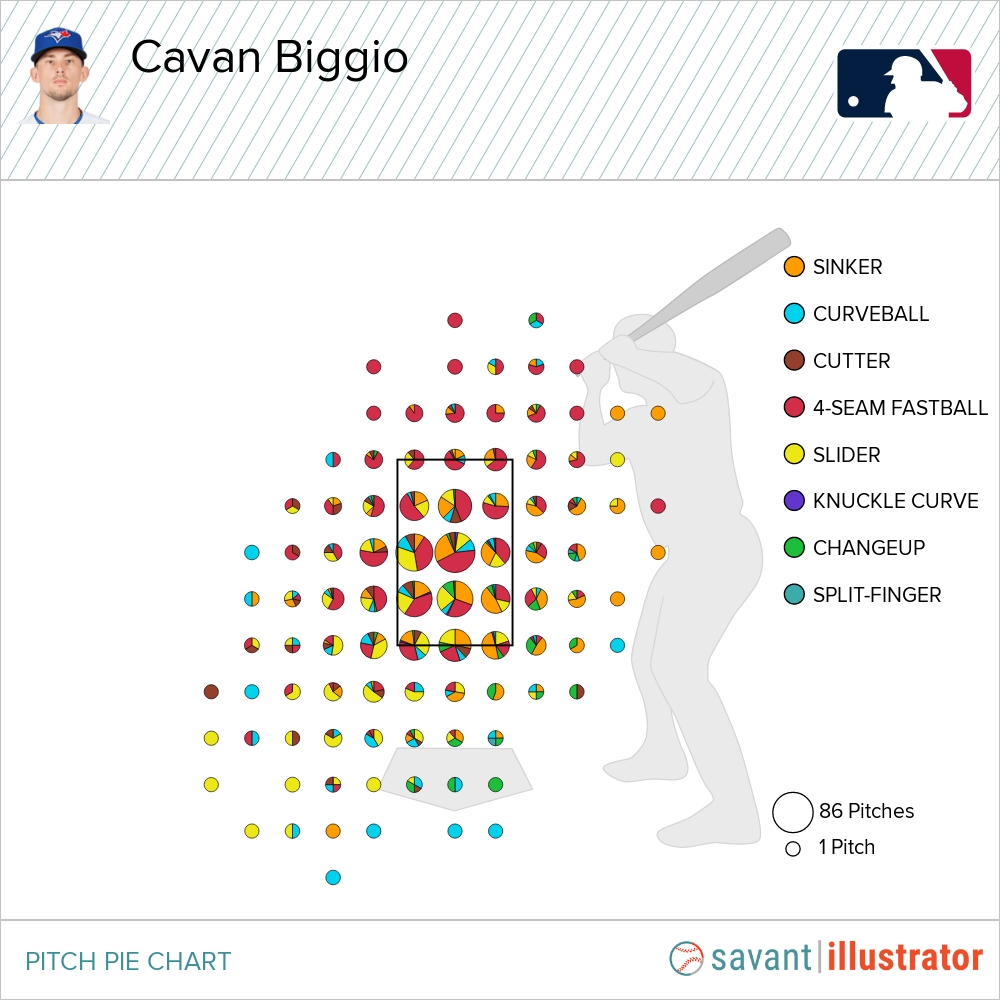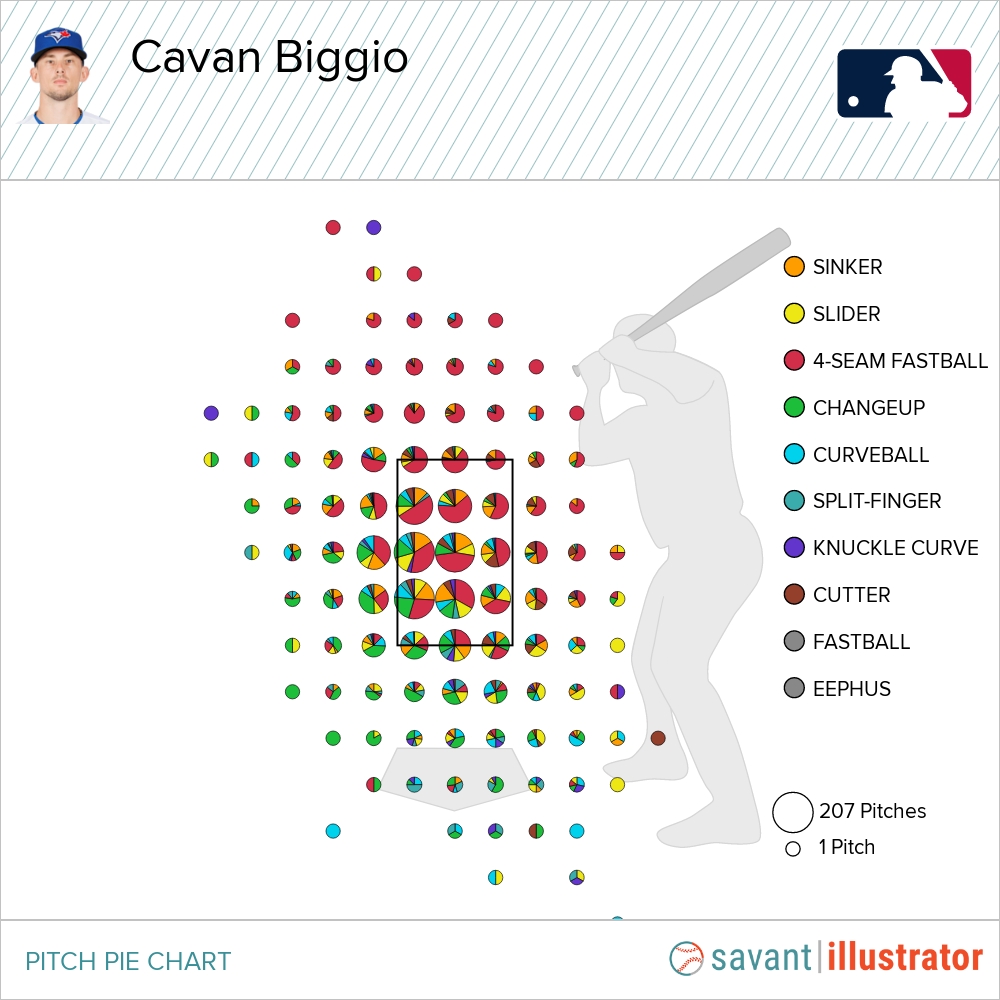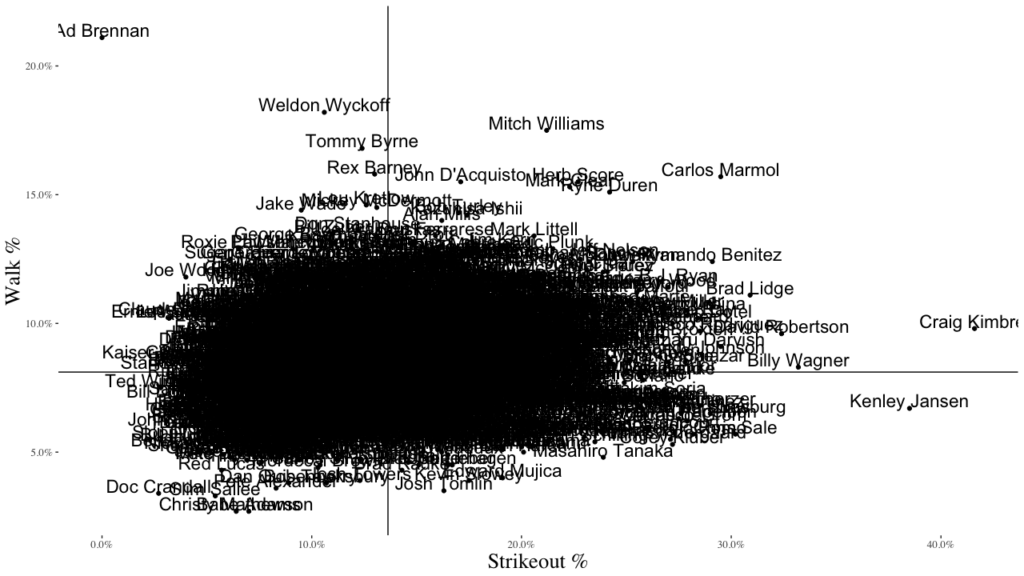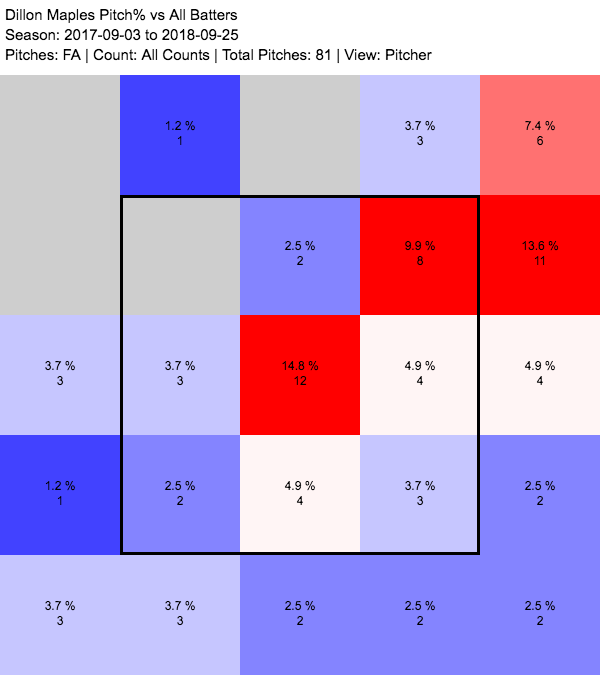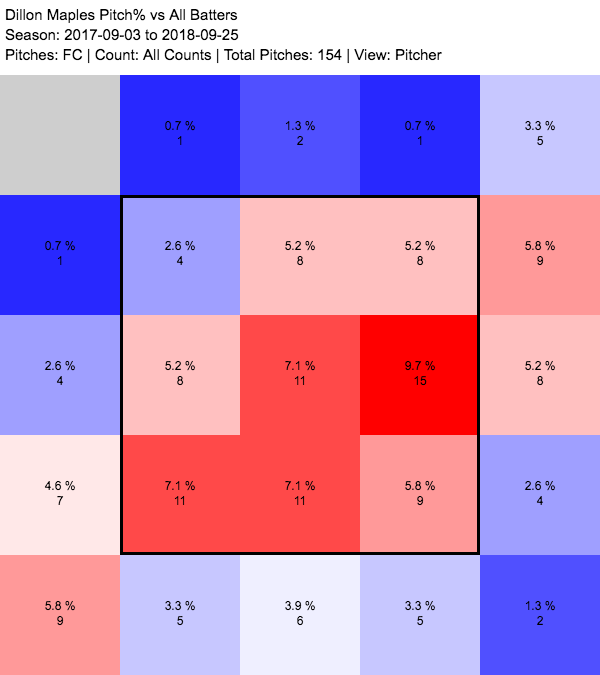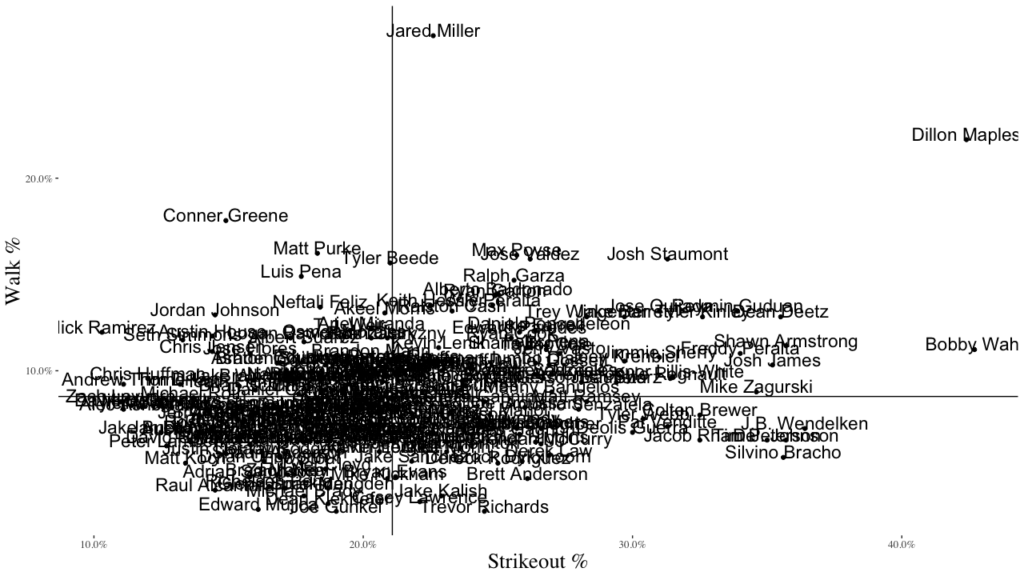Cavan Biggio took Major League Baseball by storm in 2019 and 2020, hitting a combined .240/.369/.430 over the course of his first 2 seasons. But over the past 2 seasons, the son of Craig has fallen off a cliff, falling to a .213/.321/.359 line. Instead of following in the footsteps of Vladimir Guerrero Jr. and Bo Bichette, his fellow Blue Jay sons of MLB greats, Cavan Biggio has spent much of the course of the 2021-2022 in the Minor Leagues.
What happened to the player who was supposed to be a part of the young and exciting Toronto Blue Jays’ offense? Upon digging into the data, it’s clear that Biggio’s main problem is he’s lost the ability to hit lefties. In his first 2 seasons, Biggio actually fared quite well against lefites going .259/.404/.400. Yet in the previous 2 years, he’s hit a pitiful .180/.280/.260 against southpaws. He has seen a decline against righties, going from .231/.351/.445 to .221/.331/.376, but it has not been as dramatic.
Now some may point to Biggio’s eyepopping .442 BABIP against lefties in 2020 as completely unsustainable, with his .250 BABIP against lefties in 2022 indicative of luck swinging against him. But the peripherals tell a different story. Biggio went from a 17.2% and 27.4% walk and strikeout rate in his first 2 years against southpaws, to 11.0% and 37.3% in his past 2 years. For righties, those rates went from 15.4% and 26.0% to 12.9% and 24.8% respectively. He’s actually been striking out less frequently against righties as of late.
A few interesting tidbits arise in Biggio’s plate discipline numbers. His Swing % has noticeable bump starting in 2021, in particular his out-of-zone swing %.
| Season | Swing% | Contact% | Zone% | Whiff% | O-Swing% | O-Contact% | Z-Swing% | Z-Contact% | Pace |
| 2019 | 35.9 | 74 | 40.8 | 26 | 16.9 | 47.6 | 63.6 | 84.1 | 20.1 |
| 2020 | 36.1 | 76.8 | 41.6 | 23.2 | 18.2 | 57.6 | 61.1 | 84.8 | 20.3 |
| 2021 | 41.4 | 74.2 | 44.8 | 25.8 | 22.7 | 46.8 | 64.5 | 86.2 | 20.4 |
| 2022 | 39.9 | 74 | 43.4 | 26 | 21 | 48.7 | 64.6 | 84.7 | 21 |
| Career | 38.1 | 74.6 | 42.4 | 22.8 | 19.3 | 49.7 | 63.5 | 84.9 | 20.4 |
This explains the declining walk rate, though not the problem with southpaws. The splits should explain more.
Let’s start with pitch location. In 2020, lefties and righties generally targeted Biggio away, with lefties in particular going low and away. Fast forward to 2022, and pitchers aren’t treating Biggio any different. A bit of a shift down in the zone against righties, but still pitching away, and not anything substantially different.
We saw earlier that Biggio’s been swinging more frequently out of the zone as of late. What do those heatmaps look like? Biggio exhibited elite patience against lefties going low and away, only swinging and 9% of pitches low and away out of the zone, the favorite target of southpaws. Similarly, against righties he would only swing at 10%/17% high/low and away out of the zone. This is truly off the charts patience, with Biggio coming in 3rd place leaguewide in the Maddux Plate Discipline Index for 2020. 2 years later we see a pretty different picture. Biggio is now swinging at 24% of pitches low and away out of the zone against southpaws, more than doubling his rate. Meanwhile his swing rate against pitches away and out of the zone has barely budged, only increasing by 4%/1% for high/low.
We saw earlier that Biggio’s strikeout rate had gone in different directions for lefties and righties, and the out of zone rates show why. Biggio would strike out only 25% of the time against lefties throwing low and away out of the zone in 2020. Meanwhile those rates were 26%/44% for high/low and away out of the zone for righties. But in 2022, things changed dramatically against southpaws. Biggio had a whopping 71% strikeout rate against lefties throwing low and away out of the zone. Meanwhile his numbers against righties barely budged.
What about walks? In 2020, Biggio drew a whopping 75% walk rate against lefties throwing low and away out of the zone. These numbers were 61% and 11% for high and low away against righties. Weighted average makes this a respectable 39%. And 2022? It’s all the way down to 29% against lefties low and away out of the zone! Meanwhile, the weighted average away and out of the zone against righties is only down a tick to 34%.
What about beyond walks and strikeouts? Or at least quality of contact given the BABIP variation? In 2020, Biggio had a terrific xwOBA of .524 low and away out of the zone against lefties. Against righties, the weighted average away and out of the zone was a mediocre .297. In 2022, Biggio was down to a pitiful .197 against lefties in the zone we care about. Against righties away and out of the zone, the weighted average xwOBA is actually up to .304!
Looking back over the years, it appears that multiple outlets actually called for Cavan Biggio to increase his swing rate after 2020, especially since he had a higher than called strike 3 rate. This advice may have been prudent against righties, who generally throw him fastballs and changeups away, pitches that are easier to foul off with a defensive swing. But lefties love to throw sliders to Cavan low and away and out of the zone.
Cavan Biggio is still a serviceable MLB player. As we’ve seen, there’s reason to believe he handles righties decently. But unless he returns to the patience he exhibited against lefties in 2019-2020, he will remain a platoon player at best.
